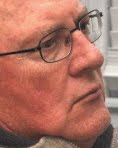
What is an active low pass filter? Fig. 1 shows a simple first order low pass filter. Since it is a linear time invariant amplifier, we can write the transfer function in the frequency domain as
G = Vo / Vi = K * Wo / (s + Wo)
where K is the basic DC gain (see the link below for more information on op-amps), and we define s and Wo as
s = j * 2 * Pi * f, (j is the square-root of minus one, Pi = 3.14159…, and f is the frequency of computation.)
Wo = 2 * Pi * fo . fo = 1 / (2*Pi*R2*C)
K = - R2 /R1
where fo is the “cut-off frequency” of the filter. Since the filter is a first order filter, a Bode plot of gain vs. frequency would show that at the cut-off frequency, fo, the gain will decline at the rate of -20db per decade of increase of frequency.
A more useful and practical way to compute gain of this filter is to compute its absolute (non-complex) value as
Gabs = K * Wo / (W^2 + Wo^2)^1/2
In words, the above equation would read absolute gain is the product of K, and Wo, divided by the square root of the sum of the squares of W and Wo.
We can intuitively see that if W >> Wo the impedance of C will be a lot less than R2 and the gain will be very low, essentially blocking high frequencies from passing. In the high frequency range the circuit acts as an integrator. On the other hand, if W is much less than Wo, the impedance of C becomes very large compared to R2 so the low frequencies are passed all the way down to and including DC signals.

No comments:
Post a Comment